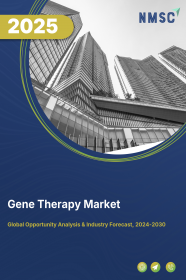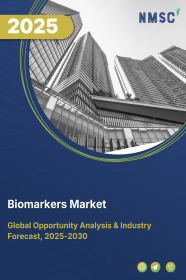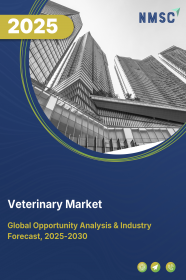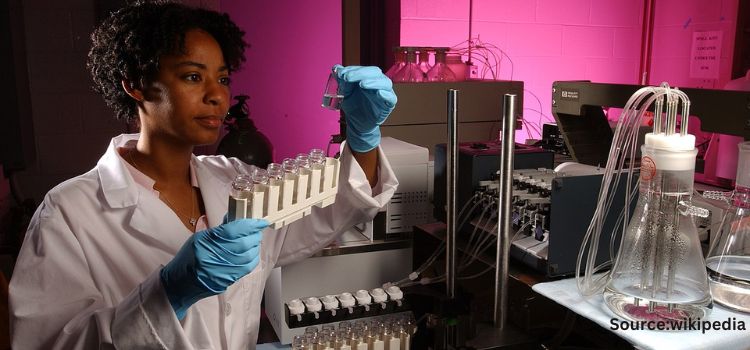
Gene Therapy Market by Vector Type (Viral Vector and Non-Viral Vector), by Therapy (In Vivo Therapy and Ex Vivo Therapy), by Indication (Oncology Diseases, Cardiovascular Diseases, Orthopedic Diseases, Ophthalmology Diseases, Central Nervous System Disorders, Infectious Diseases, and Others), by Gene Type (Antigen, Cytokine, Tumor Suppressor, Suicide, Deficiency, Receptors, and Others) and Others– Global Opportunity Analysis and Industry Forecast 2024-2030
US Tariff Impact on Gene Therapy Market
Trump Tariffs Are Reshaping Global Business
Market Overview
The global Gene Therapy Market size was valued at USD 8.92 billion in 2023 and is predicted to reach USD 48.34 billion by 2030 with a CAGR of 27.3% from 2024-2030. Gene therapy refers to the medical approach that treats or prevents diseases by correcting genetic problem. The objective of gene therapy is to restore any abnormal DNA to its original or healthy state. Gene therapy works by replacing defective genes or deactivating disease-causing genes by introducing new genes into the body to treat specific illnesses. Gene therapy technology allows doctors to treat disease by altering a person's genetic makeup rather than using drugs or surgery. It also facilitates for treating a wide range of diseases, including cancer, cystic fibrosis, heart disease, diabetes, hemophilia and AIDS.
Market Dynamics and Trends
The expansion of the gene therapy industry is propelled by the growing incidence of chronic conditions such as cancer and diabetes that leads to an escalating need for diverse gene-based treatments such as immune modulation, oncolytic virotherapy, and antisense therapies. As per the recent publication by the Pan American Health Organization in 2023, approximately 20 million individuals are presently diagnosed with cancer, resulting in 10 million fatalities attributed to the disease. Furthermore, there is a projected 60% surge in the prevalence of this disease over the upcoming two decades, driving the demand for gene therapies for the treatment of the disease.
Also, increasing investment in research & development (R&D) activities for the production of novel drugs & devices to deliver high-quality and innovative products in the market is expected to propel the growth of gene therapy market. For instance, in March 2021, the Medical Research Council (MRC) and LifeArc announced three major investments to create a national network of cutting-edge gene therapy innovation hubs. The three new innovation hubs intend to facilitate advanced clinical development of new genetic treatment.
Moreover, growing implementation of advanced technologies such as artificial intelligence and machine learning is accelerating the sequencing of genetic data and enhancing the accuracy of predicting genetic alterations linked to specific diseases. This trend is significantly bolstering the gene therapy market's growth.
For instance, in June 2023, Aarhus University conducted research using artificial Intelligence for refining and optimizing gene therapy treatments. The research highlights the potential of AI-generated protein structure predictions to enhance the precision of CRISPR, a DNA editing technology, resulting in more accurate cuts in a patient's DNA, improving the efficiency of gene therapy treatments.
However, the high cost associated with developing and administering gene therapy treatments is the major factor restraining the growth of market during the forecast period. On the contrary, growing number of clinical trials due to the rising advancements in gene therapies such as virus-free delivery systems, nanoparticles and gene editing systems that enables removing of infectious disease with better accuracy and efficiently are expected to create ample growth opportunities for the market in the coming years.
For instance, in June 2023, the National Institutes of Health (NIH), the Food and Drug Administration (FDA), biopharmaceutical companies, and other organizations financed the gene therapy clinical trials for three rare diseases at UT Southwestern Medical Center and Children’s Health. These trials focus on neurodevelopmental disorders in children, demonstrating the potential of gene therapy to address rare genetic conditions with limited treatment options in the future.
Market Segmentations and Scope of the Study
The gene therapy market share is segmented on the basis of vector type, therapy, indication, gene type, application, end user and geography. On the basis of vector type, the market is divided into viral vector and non-viral vector. Viral segment is further sub divided into retroviral, adeno-associated and others. Non-viral segment is classified into oligonucleotides. On the basis of therapy, the market is classified into in vivo therapy and ex vivo therapy. On the basis of indication, the market is categorized into oncology diseases, cardiovascular diseases, orthopedic diseases, ophthalmology diseases, central nervous system disorders, infectious diseases, and others. On the basis of gene type, the market is bifurcated into antigen, cytokine, tumor suppressor, suicide, deficiency, receptors, and others. On the basis of application, the market is divided into oncology, dermatology, musculoskeletal, and others. On the basis of end user, the market is classified into pharmaceutical & biotechnology companies, academic & research institutes, and others. Geographic breakdown and analysis of each of the aforesaid segments includes regions comprising of North America, Europe, Asia-Pacific, and RoW.
Geographical Analysis
North America holds the dominant share of gene therapy market at present and is expected to continue its dominance during the forecast period. This is attributed to rising government initiatives in gene therapies to cure varieties of growing diseases such as cancer, heart diseases and other rare diseases such as haemophilia and muscular dystrophy in this region. For instance, in October 2021, the U.S. Food and Drug Administration, the National Institutes of Health and 15 private other organizations announced to join forces to increase effective gene therapies. It aimed to accelerate development of gene therapies for the 30 million Americans who suffer from rare diseases such as haemophilia and Pyruvate Kinase Deficiency (PKD).
Also, presence of major key players such as Thermo Fisher Scientific, Biogen, Celgene Corporation and Spark Therapeutics, Inc. that are adopting various strategies such as acquisition and product launches further boosts the market growth in this region.
For instance, in January 2022, Thermo Fisher Scientific acquired PeproTech to drive the evolution of the fast-growing market for cell and gene therapies. The acquisition of Pepro Tech enabled Thermo Fisher Scientific’s to increase capabilities in the high growth of cell and gene therapy market.
On the other hand, Asia-Pacific is expected to show a steady rise in the gene therapy market due to increased prevalence of chronic diseases such as inherited eye diseases as well as non-inherited diseases such as cancer and HIV, that can be treated with the help of genome editing technology and gene therapy in this region. According to World Health Organization, the number of people died from HIV-related causes is 6,50,000 and the number of people that acquired HIV is 1.5 million at the end of 2022.
Moreover, rising government investments for the growing implementation of genome editing and gene therapies that enables to study and understand the pattern of gene expression are expected to drive the market growth in this region. For instance, in March 2022, the Australian government invested USD 28.1 million to establish genomics agency. This new agency aimed to support the integration of genomic medicine in Australia’s healthcare system.
Competitive Landscape
Various market players operating in the gene therapy market includes Thermo Fisher Scientific, Novartis AG, Biogen, Orchard Therapeutics Limited, Celgene Corporation, Spark Therapeutics, Inc., F. Hoffmann-La Roche Ltd., Nikon Corporation, Fujifilm Holdings Corporation and Voyager Therapeutics. These market players are adopting various strategies such as product launches and acquisition of business across various regions to maintain their dominance in the gene therapy market.
For instance, in January 2023, Spark Therapeutics, a subsidiary of F. Hoffmann-La Roche Ltd. collaborated with Neurochase, a company specializing in the development of scalable therapeutic strategies and enabling technology for direct delivery to the central nervous system (CNS) to develop Neurochase’s proprietary delivery technology. This technology is aimed to be used with selected gene therapies for rare diseases in CNS.
Also, in May 2022, Novartis AG announced approval of the U.S. Food and Drug Administration (FDA) for its Kymriah. Kymriah is used for the treatment of adult patients with relapsed or refractory follicular lymphoma after two or more lines of systemic therapy.
Moreover, in March 2022, Fujifilm Corporation acquired Shenandoah Biotechnology to establish a leading position in the growing market of advanced gene therapy. This acquisition enabled the creation of new therapies to fulfill unmet medical needs.
Key Benefits
-
The report provides quantitative analysis and estimations of the gene therapy market from 2024 to 2030, which assists in identifying the prevailing market opportunities.
-
The study comprises a deep dive analysis of the gene therapy market including the current and future trends to depict prevalent investment pockets in the market.
-
Information related to key drivers, restraints, and opportunities and their impact on the gene therapy market is provided in the report.
-
Competitive analysis of the players, along with their market share is provided in the report.
-
SWOT analysis and Porters Five Forces model is elaborated in the study.
-
Value chain analysis in the market study provides a clear picture of roles of stakeholders.
Key Market Segments
By Vector Type
-
Viral Vector
-
Retroviral
-
Adeno-associated
-
Others
-
-
Non-Viral Vector
By Therapy
-
In Vivo Therapy
-
Ex Vivo Therapy
By Indication
-
Oncology Diseases
-
Cardiovascular Diseases
-
Orthopedic Diseases
-
Ophthalmology Diseases
-
Central Nervous System Disorders
-
Infectious Diseases
-
Others
By Gene Type
-
Antigen
-
Cytokine
-
Tumor Suppressor
-
Suicide
-
Deficiency
-
Receptors
-
Others
By Application
-
Oncology
-
Dermatology
-
Musculoskeletal
-
Others
By End User
-
Pharmaceutical & Biotechnology Companies
-
Academic & Research Institutes
-
Others
By Region
-
North America
-
U.S
-
Canada
-
Mexico
-
-
Europe
-
UK
-
Germany
-
France
-
Italy
-
Spain
-
Denmark
-
Netherlands
-
Finland
-
Sweden
-
Norway
-
Russia
-
Rest of Europe
-
-
Asia-Pacific
-
China
-
Japan
-
India
-
South Korea
-
Australia
-
Indonesia
-
Singapore
-
Taiwan
-
Thailand
-
Rest of Asia-Pacific
-
-
RoW
-
Latin America
-
Middle East
-
Africa
-
Key Players
-
Thermo Fisher Scientific
-
Novartis AG
-
Biogen
-
Orchard Therapeutics Limited
-
Celgene Corporation
-
Spark Therapeutics, Inc.
-
F. Hoffmann-La Roche Ltd.
-
Nikon Corporation
-
Fujifilm Holdings Corporation
-
Voyager Therapeutics
REPORT SCOPE AND SEGMENTATION:
|
Parameters |
Details |
|
Market Size in 2023 |
USD 8.92 Billion |
|
Revenue Forecast in 2030 |
USD 48.34 Billion |
|
Growth Rate |
CAGR of 27.3% from 2024 to 2030 |
|
Analysis Period |
2023–2030 |
|
Base Year Considered |
2023 |
|
Forecast Period |
2024–2030 |
|
Market Size Estimation |
Billion (USD) |
|
Growth Factors |
|
|
Countries Covered |
28 |
|
Companies Profiled |
10 |
|
Market Share |
Available for 10 companies |
|
Customization Scope |
Free customization (equivalent up to 80 working hours of analysts) after purchase. Addition or alteration to country, regional, and segment scope. |
|
Pricing and Purchase Options |
Avail customized purchase options to meet your exact research needs. |

















 Speak to Our Analyst
Speak to Our Analyst




















